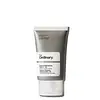What's inside
What's inside
 Key Ingredients
Key Ingredients

 Benefits
Benefits

 Concerns
Concerns

 Ingredients Side-by-side
Ingredients Side-by-side

Water
Skin ConditioningGlycerin
HumectantGlyceryl Stearate
EmollientC12-15 Alkyl Benzoate
AntimicrobialCaprylic/Capric Triglyceride
MaskingDimethicone
EmollientBehenyl Alcohol
EmollientPEG-100 Stearate
Cyclopentasiloxane
EmollientDimethiconol
EmollientButyrospermum Parkii Butter
Skin ConditioningSodium Acrylates Copolymer
Sodium Hyaluronate Crosspolymer
HumectantSodium Hyaluronate
HumectantSodium Acetylated Hyaluronate
HumectantHydrolyzed Sodium Hyaluronate
Skin ConditioningSodium PCA
HumectantCetearyl Alcohol
EmollientRibose
HumectantSaccharide Isomerate
HumectantHydrogenated Starch Hydrolysate
HumectantAscophyllum Nodosum Extract
Skin ConditioningAsparagopsis Armata Extract
Skin ProtectingErythritol
HumectantChondrus Crispus
MaskingCeramide NP
Skin ConditioningSqualane
EmollientPhenethyl Alcohol
Masking1,2-Hexanediol
Skin ConditioningXanthan Gum
EmulsifyingBisabolol
MaskingSodium Citrate
BufferingPEG-7 Glyceryl Cocoate
EmulsifyingNiacinamide
SmoothingTocopheryl Acetate
AntioxidantLecithin
EmollientGlycine Soja Sterols
EmollientParfum
MaskingWater, Glycerin, Glyceryl Stearate, C12-15 Alkyl Benzoate, Caprylic/Capric Triglyceride, Dimethicone, Behenyl Alcohol, PEG-100 Stearate, Cyclopentasiloxane, Dimethiconol, Butyrospermum Parkii Butter, Sodium Acrylates Copolymer, Sodium Hyaluronate Crosspolymer, Sodium Hyaluronate, Sodium Acetylated Hyaluronate, Hydrolyzed Sodium Hyaluronate, Sodium PCA, Cetearyl Alcohol, Ribose, Saccharide Isomerate, Hydrogenated Starch Hydrolysate, Ascophyllum Nodosum Extract, Asparagopsis Armata Extract, Erythritol, Chondrus Crispus, Ceramide NP, Squalane, Phenethyl Alcohol, 1,2-Hexanediol, Xanthan Gum, Bisabolol, Sodium Citrate, PEG-7 Glyceryl Cocoate, Niacinamide, Tocopheryl Acetate, Lecithin, Glycine Soja Sterols, Parfum
Water
Skin ConditioningCaprylic/Capric Triglyceride
MaskingCetyl Alcohol
EmollientPropanediol
SolventStearyl Alcohol
EmollientGlycerin
HumectantSodium Hyaluronate
HumectantArginine
MaskingAspartic Acid
MaskingGlycine
BufferingAlanine
MaskingSerine
MaskingValine
MaskingIsoleucine
Skin ConditioningProline
Skin ConditioningThreonine
Histidine
HumectantPhenylalanine
MaskingGlucose
HumectantMaltose
MaskingFructose
HumectantTrehalose
HumectantSodium PCA
HumectantPCA
HumectantSodium Lactate
BufferingUrea
BufferingAllantoin
Skin ConditioningLinoleic Acid
CleansingOleic Acid
EmollientPhytosteryl Canola Glycerides
Skin ConditioningPalmitic Acid
EmollientStearic Acid
CleansingLecithin
EmollientTriolein
Skin ConditioningTocopherol
AntioxidantCarbomer
Emulsion StabilisingIsoceteth-20
EmulsifyingPolysorbate 60
EmulsifyingSodium Chloride
MaskingCitric Acid
BufferingTrisodium Ethylenediamine Disuccinate
Pentylene Glycol
Skin ConditioningTriethanolamine
BufferingSodium Hydroxide
BufferingPhenoxyethanol
PreservativeChlorphenesin
AntimicrobialWater, Caprylic/Capric Triglyceride, Cetyl Alcohol, Propanediol, Stearyl Alcohol, Glycerin, Sodium Hyaluronate, Arginine, Aspartic Acid, Glycine, Alanine, Serine, Valine, Isoleucine, Proline, Threonine, Histidine, Phenylalanine, Glucose, Maltose, Fructose, Trehalose, Sodium PCA, PCA, Sodium Lactate, Urea, Allantoin, Linoleic Acid, Oleic Acid, Phytosteryl Canola Glycerides, Palmitic Acid, Stearic Acid, Lecithin, Triolein, Tocopherol, Carbomer, Isoceteth-20, Polysorbate 60, Sodium Chloride, Citric Acid, Trisodium Ethylenediamine Disuccinate, Pentylene Glycol, Triethanolamine, Sodium Hydroxide, Phenoxyethanol, Chlorphenesin
 Reviews
Reviews

Ingredients Explained
These ingredients are found in both products.
Ingredients higher up in an ingredient list are typically present in a larger amount.
This ingredient is an emollient, solvent, and texture enhancer. It is considered a skin-softener by helping the skin prevent moisture loss.
It helps thicken a product's formula and makes it easier to spread by dissolving clumping compounds.
Caprylic Triglyceride is made by combining glycerin with coconut oil, forming a clear liquid.
While there is an assumption Caprylic Triglyceride can clog pores due to it being derived from coconut oil, there is no research supporting this.
Learn more about Caprylic/Capric TriglycerideGlycerin is already naturally found in your skin. It helps moisturize and protect your skin.
A study from 2016 found glycerin to be more effective as a humectant than AHAs and hyaluronic acid.
As a humectant, it helps the skin stay hydrated by pulling moisture to your skin. The low molecular weight of glycerin allows it to pull moisture into the deeper layers of your skin.
Hydrated skin improves your skin barrier; Your skin barrier helps protect against irritants and bacteria.
Glycerin has also been found to have antimicrobial and antiviral properties. Due to these properties, glycerin is often used in wound and burn treatments.
In cosmetics, glycerin is usually derived from plants such as soybean or palm. However, it can also be sourced from animals, such as tallow or animal fat.
This ingredient is organic, colorless, odorless, and non-toxic.
Glycerin is the name for this ingredient in American English. British English uses Glycerol/Glycerine.
Learn more about GlycerinLecithin is a term for a group of substances found in the cell membranes of plants, animals, and humans. They are made up of mixture of phospholipids.
This ingredient has emollient and emulsifying properties.
As an emollient, lecithen helps soften the skin and creates a barrier to keep moisture in.
As an emulsifier, it also helps prevent water and oil ingredients from separating. Lecithin can also help ingredients be better absorbed by the skin.
This is because the phospholipids in lecithin produce liposomes. Liposomes help other ingredients get through the skin barrier.
Depending on the source of this ingredient, lecithin may not be fungal acne safe. This is because some sources of lecithin come from soybean oil, which may feed the malassezia yeast that feeds fungal acne.
We recommend reaching out to the brand you are purchasing from to inquire about the source of their lecithin.
Some other names for this ingredient include soy lecithin and deoiled soy lecithin.
Learn more about LecithinSodium Hyaluronate is hyaluronic acid's salt form. It is commonly derived from the sodium salt of hyaluronic acid.
Like hyaluronic acid, it is great at holding water and acts as a humectant. This makes it a great skin hydrating ingredient.
Sodium Hyaluronate is naturally occurring in our bodies and is mostly found in eye fluid and joints.
These are some other common types of Hyaluronic Acid:
Learn more about Sodium HyaluronateSodium PCA is the sodium salt of pyroglutamic acid. It is naturally occurring in our skin's natural moisturizing factors where it works to maintain hydration.
The PCA stands for pyrrolidone carboxylic acid, a natural amino acid derivative.
This ingredient has skin conditioning, anti-inflammatory, and humectant properties. Humectants help hydrate your skin by drawing moisture from the air. This helps keep your skin moisturized.
Learn more about Sodium PCAWater. It's the most common cosmetic ingredient of all. You'll usually see it at the top of ingredient lists, meaning that it makes up the largest part of the product.
So why is it so popular? Water most often acts as a solvent - this means that it helps dissolve other ingredients into the formulation.
You'll also recognize water as that liquid we all need to stay alive. If you see this, drink a glass of water. Stay hydrated!
Learn more about Water